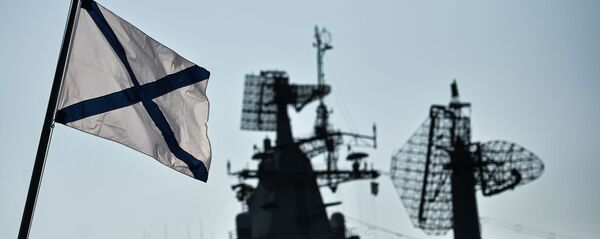After an almost 40-year absence, a NATO naval group consisting of three American destroyers, the USS Donald Cook, USS Porter, and USS Roosevelt, as well as the UK's HMS Kent, has ventured into the Barents Sea near Russia's borders. According to a statement from the US Sixth Fleet, Moscow was warned about their visit several days prior in order to prevent "misperceptions, risk, and inadvertent escalation".
The Sixth Fleet justified the NATO ships' presence in the region, which is adjacent to Russia's borders, by resorting to the routine pretext of asserting "freedom of navigation" and conducting "maritime security operations in the challenging environmental conditions above the Arctic Circle".
However, the appearance of the US and UK vessels in the area, which has long served as the base of operations for the Russian Northern Fleet, actually indicates more than the official statement suggests, military veteran and head of the Russian journal "Weapons Export" Victor Murakhovsky indicates.
"Their visit to the Barents Sea indicates a shift in the Pentagon's general strategy […] Washington has recently been speaking of focusing on confrontation with Russia and China. They have been changing the vector of their operational and combat training, military forces' structure, even their weapons and military vehicles", Murakhovsky says.
The military expert stresses that ever since the Cold War, the Barents Sea has had strategic importance for both Soviet and American Navies. The USSR stationed many of its submarines with nuclear ballistic missiles in the region, while the US sent forces to track their movements. Murakhovsky says the sea's significance hasn't changed since then and that the US is still interested in monitoring the Russian Northern Fleet's movements. While most of the surveillance is carried out with the use of special aircraft and submarines, destroyers, like those that visited the Barents Sea recently, are also capable of doing this job, the expert says.
'Practice' for Russian Navy
Russia's Defence Ministry has reacted to the presence of the British and American warships in the Barents Sea, vowing that it won't go unnoticed. The Russian Northern Fleet has sent forces to monitor the movements of the NATO destroyers and closed off part of the sea for military drills involving the use of live rounds.
The country's Foreign Ministry, in turn, branded the visit as another step by NATO aimed at increasing its military presence in the Arctic region, arguing that this results in nothing good.
"We believe that [these steps] lead to an increase in tensions and undermine the stability of the region and the world in general", special Russian envoy Nikolay Korchunov states.
But the NATO ships' visit to the Barents Sea might actually be of use to Moscow, military expert Murakhovsky notes. He indicates that Russia has for some time been setting up a surveillance system in the Arctic that monitors air, sea, and underwater and that the US and UK might have just given it a free test.
"The key elements of [the system] are already functioning. The US destroyers' visit to the Barents Sea is excellent practice for this system", Murakhovsky says.





